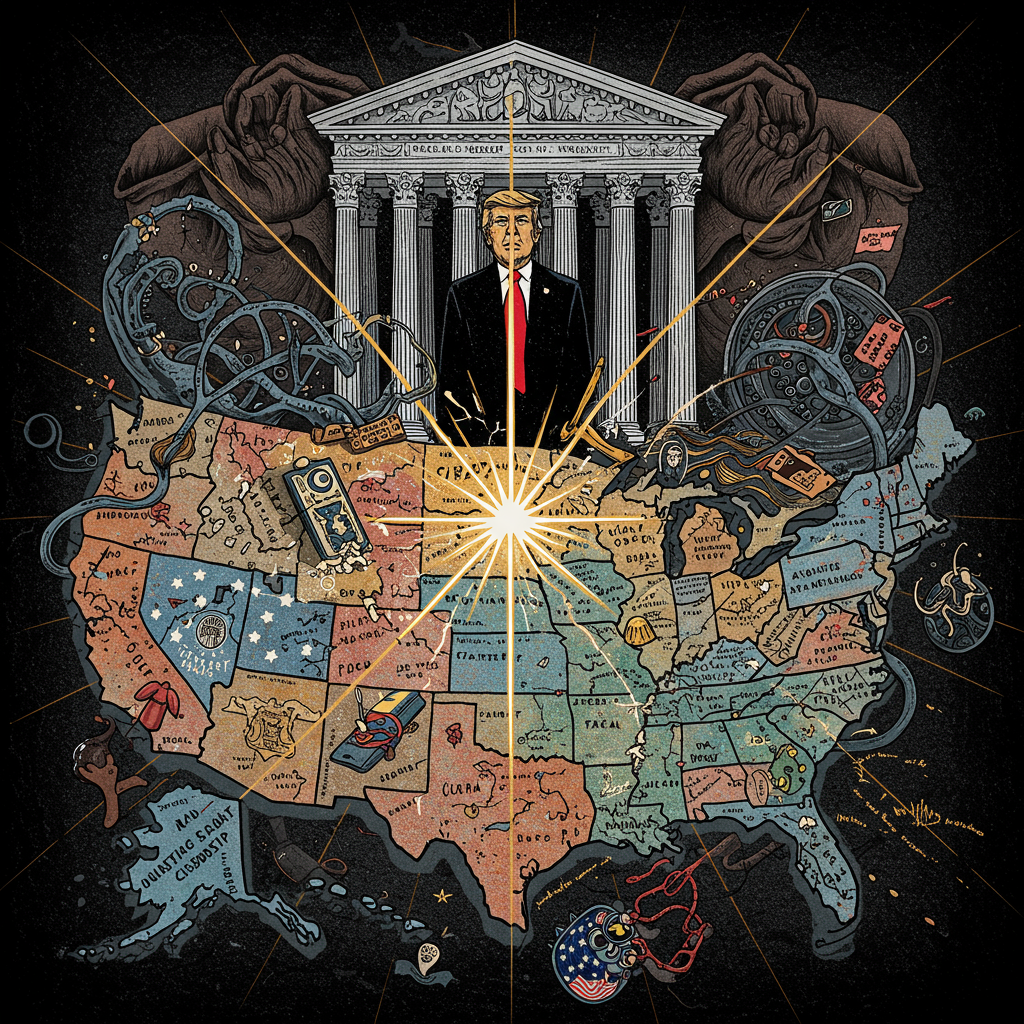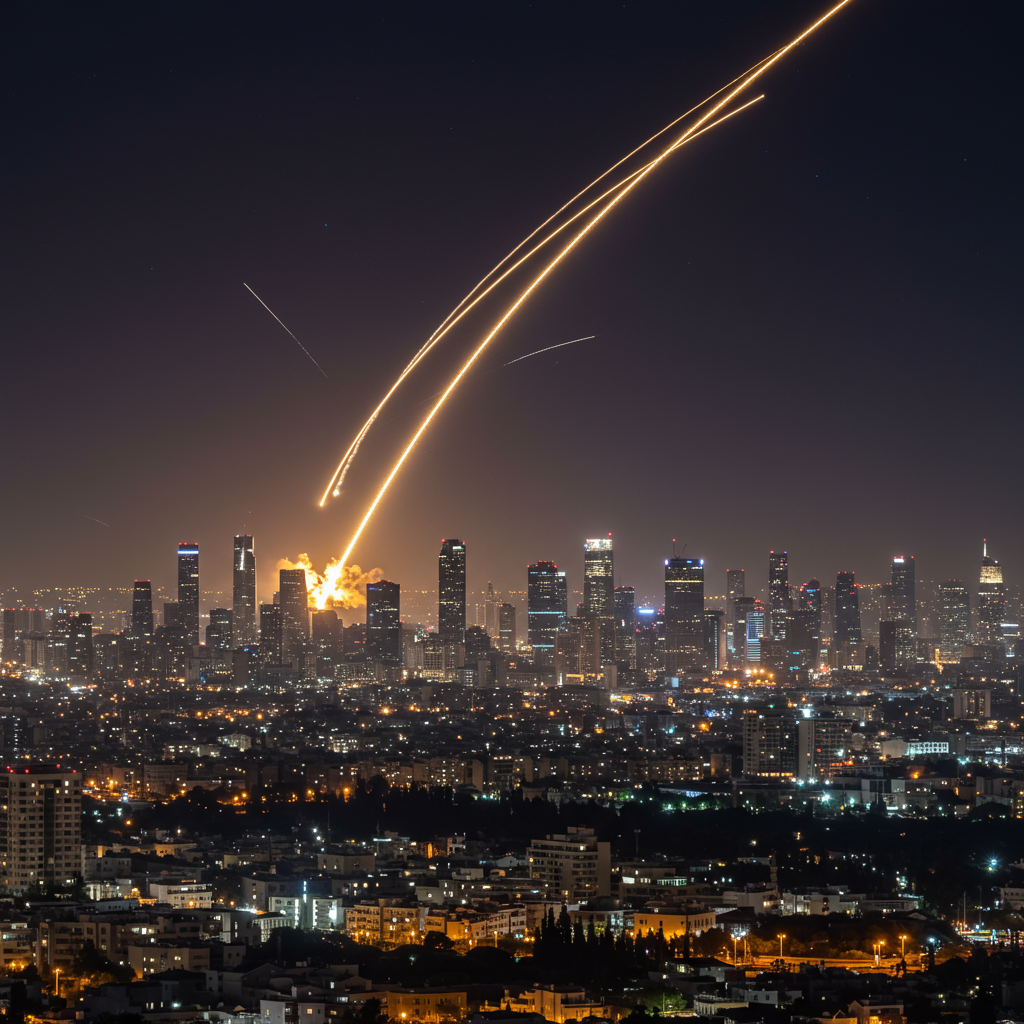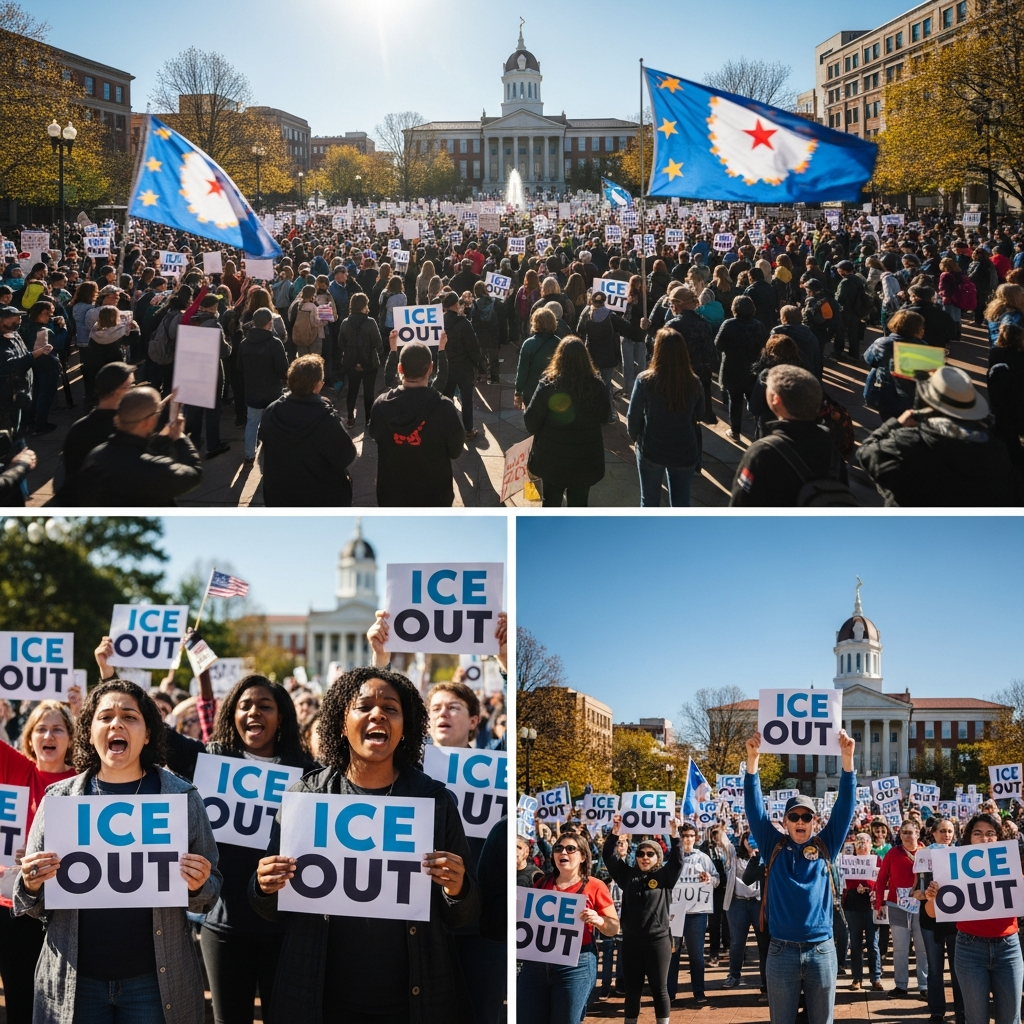A recent Supreme court ruling reshapes the legal battlefield over birthright citizenship. While not deciding the core issue, the Court delivered a significant procedural victory to the Trump administration. This decision focused on the power of lower courts to issue broad, nationwide injunctions. It sends challenges to the administration’s executive order back to lower courts. The ultimate fate of citizenship for children born in the U.S. remains uncertain as legal strategies adapt.
Understanding Birthright Citizenship in the U.S.
Birthright citizenship grants automatic American citizenship to nearly everyone born on U.S. soil. This includes children whose parents may be in the country without legal status. The foundation for this principle lies in the U.S. Constitution’s 14th Amendment. Ratified after the Civil War, this amendment aimed, in part, to guarantee citizenship for newly freed Black Americans.
The relevant clause states: “All persons born or naturalized in the United States and subject to the jurisdiction thereof, are citizens of the United States.” This has been interpreted based on the English common law principle of jus soli, or “right of the soil.”
A landmark Supreme Court case solidified this interpretation. In 1898, United States v. Wong Kim Ark affirmed that a person born in the U.S. to parents of Chinese descent who were not citizens was indeed a U.S. citizen. This ruling reinforced the understanding that birthplace is the primary determinant of citizenship. There are only narrow exceptions, such as for children born to foreign diplomats. For over a century, birthright citizenship has been considered settled constitutional law.
The President’s Executive Order
President Trump signed an executive order in January aiming to alter this long-standing practice. The order seeks to deny citizenship to children born to parents living in the U.S. illegally or temporarily. This aligns with the president’s strict immigration stance. He has called birthright citizenship a “magnet for illegal immigration.”
The administration’s legal argument hinges on a specific phrase in the 14th Amendment: “subject to the jurisdiction thereof.” President Trump and supporters claim this phrase allows the U.S. to deny citizenship to babies born to mothers residing in the country illegally. They argue the clause was intended primarily for children of formerly enslaved people. They contend it wasn’t meant for individuals allegedly attempting “birth tourism” or otherwise “scamming the system.”
Lower Courts Block the Order
Before reaching the Supreme Court on the injunction issue, President Trump’s executive order faced immediate legal challenges. Immigrant rights groups and states filed lawsuits arguing the order was unconstitutional. Several federal district judges agreed with the challengers. They issued nationwide injunctions. These orders effectively blocked the executive action from taking effect across the entire country.
These judges found the administration’s interpretation of the 14th Amendment baseless. U.S. District Judge John Coughenour, with four decades on the bench, called the order “blatantly unconstitutional.” U.S. District Judge Deborah Boardman stated that no court in the country had ever endorsed Trump’s view. Appellate courts had previously declined to narrow these nationwide blocks.
The Supreme Court’s Ruling on Injunctions
The Supreme Court’s recent decision on May 15, 2025, marked a major win for the Trump administration. However, this victory was purely procedural. The Court did not rule on the constitutionality of the birthright citizenship executive order itself. Instead, the 6-3 decision focused solely on the scope of judicial power.
The Court ruled that lower federal courts likely exceed their authority by issuing universal or nationwide injunctions. These broad orders prevent the government from enforcing a policy against anyone, even those not party to the specific lawsuit. Justice Amy Coney Barrett, writing for the majority, argued that federal courts resolve specific “cases and controversies.” They are not meant to exercise general oversight of the executive branch. She noted that nationwide injunctions were “conspicuously nonexistent” historically. This suggested a lack of underlying authority under the Judiciary Act.
Solicitor General D. John Sauer had argued that such injunctions had reached “epidemic” proportions. He claimed they disrupted crucial executive branch functions, including border security and national security. By limiting these broad injunctions, the Court sent the cases challenging the birthright citizenship policy back down. Lower courts must now narrow their orders. They must ensure the injunctions only provide “complete relief” to the specific plaintiffs involved in each case.
What Happens Next in the Legal Battle?
The Supreme Court ruling significantly shifts the legal landscape for challengers. The executive order remains blocked for at least 30 days following the ruling. This period allows courts and parties to determine the next steps.
Immigrant advocates and their lawyers are quickly adjusting their strategy. No longer able to rely easily on universal injunctions from individual judges, they are pursuing broader relief through class action lawsuits. Within hours of the SCOTUS decision, new class action suits were filed. For example, the ACLU filed a lawsuit in New Hampshire. Lawyers in a Maryland case amended their complaint to seek nationwide class status. Groups like CASA also requested their lawsuits proceed on a classwide basis. Attorney William Powell indicated this tactical shift aims to secure “complete relief for everyone who would be covered by the executive order.”
However, securing nationwide relief through a class action presents its own difficulties. Legal experts note that courts have established hurdles to certifying nationwide classes over the years. Suzette Malveaux, a law professor, cautioned that class actions are not an “easy, breezy way” around the problem of limited nationwide relief.
The Risk of a Patchwork System
A significant concern raised by opponents is the potential creation of a confusing patchwork of policies. If the executive order is blocked only in states or for specific plaintiffs who sued, it could take effect elsewhere. This would mean the citizenship status of children born to immigrant parents could depend entirely on the state where they are born.
Colorado Attorney General Phil Weiser confirmed that birthright citizenship remains “protected” in Colorado. This is because Colorado is one of 22 states that filed separate lawsuits. The Supreme Court’s ruling does not invalidate injunctions applying specifically to those states or plaintiffs. However, AG Weiser warned of the chaos this could cause. A child born in Colorado but living in a neighboring state where the order is in effect could face complex questions about their status. Krish O’Mara Vignarajah of Global Refuge stated the Court “invited chaos, inequality, and fear” by limiting uniform enforcement of settled law. Colorado Governor Jared Polis also expressed concern about a potential “patchwork” system eroding rights.
The Path Ahead
Justice Sonia Sotomayor, in a powerful dissent, criticized the majority for “abdicating its role.” She warned the ruling endangered constitutional rights for those not directly involved in a lawsuit. Sotomayor urged lower courts to act swiftly on requests for relief, particularly for class actions. This, she argued, would allow prompt Supreme Court review of the executive order’s constitutionality.
Attorney General Pam Bondi expressed confidence that the administration will ultimately prevail on the merits of the case when it reaches the high court. Legal experts, including AG Weiser, believe it is “more likely than not” that the Supreme Court will eventually hear the fundamental question of whether the president can unilaterally reinterpret the 14th Amendment.
The legal fight is far from over. The focus shifts to lower courts determining the scope of their injunctions and the viability of nationwide class actions. Meanwhile, the underlying question of whether President Trump’s executive order is constitutional remains unresolved. The situation creates significant uncertainty for potentially affected families and highlights the ongoing debate over executive power and judicial oversight.
Frequently Asked Questions
Did the Supreme Court end birthright citizenship?
No, the Supreme Court did not end birthright citizenship. Its recent ruling focused strictly on the authority of lower courts to issue nationwide injunctions. The Court limited these broad orders, but did not address or decide whether President Trump’s executive order to deny birthright citizenship is constitutional. Birthright citizenship remains the law based on the 14th Amendment and previous Supreme Court interpretations like Wong Kim Ark.
How is birthright citizenship currently protected after the ruling?
Birthright citizenship remains protected through several avenues. In states like Colorado, which filed their own lawsuits challenging the executive order, state-specific injunctions remain in place for residents of those states. Additionally, opponents of the order are now focusing on filing nationwide class action lawsuits. If successful, these lawsuits could secure relief for large groups of people affected by the order.
What are the next steps in the legal challenge to the birthright citizenship order?
Following the Supreme Court’s ruling, the cases have been sent back to the lower federal courts. These courts must now revise their injunctions to comply with the limitation on nationwide scope. Challengers will pursue class action certification to seek broader relief. The executive order is blocked for at least 30 days. The core legal question of the order’s constitutionality remains pending and is expected to return to the Supreme Court for a decision on the merits in the future.
The legal battle over birthright citizenship continues, now navigating a landscape altered by the Supreme Court’s ruling on injunctions. While the constitutional principle itself was not overturned, the path to blocking the executive order nationwide has become more complex. The focus shifts to lower courts and class action strategies, with the ultimate decision on the order’s legality potentially years away. The outcome will significantly impact immigration policy and the interpretation of the U.S. Constitution.




